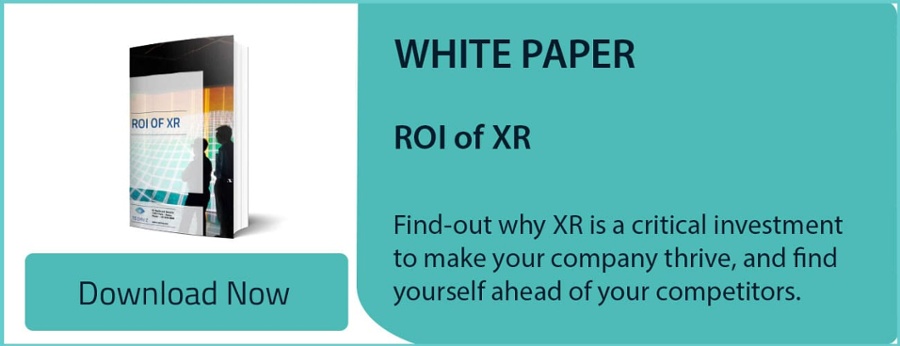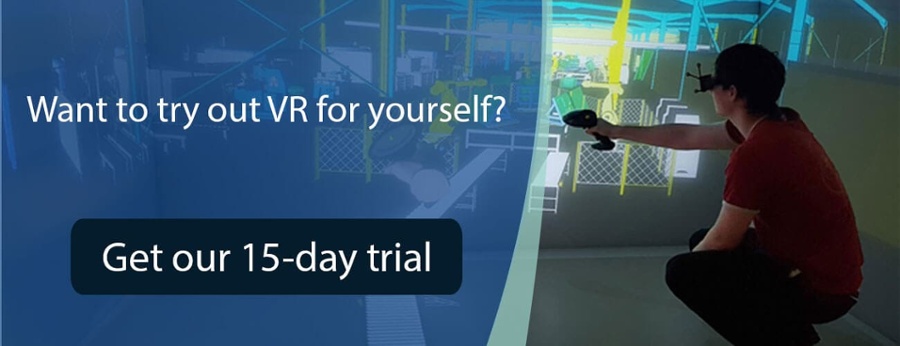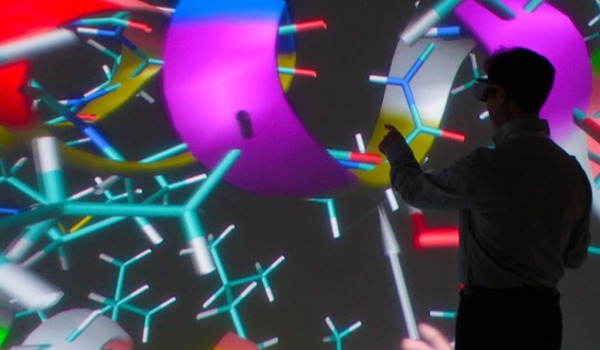
Immersive technologies play a crucial role in the pharmaceutical and healthcare industry worldwide. According to a report from Statista, the market for augmented and virtual technology in medicine and pharma will grow by $4.64 million by 2025 thanks to many advancements in the healthcare industry in recent years.
In the pharma sector, many executives are aware of the disruptive potential of digital transformation and immersive technologies. However, they are still unsure how to implement the solutions in their pharmaceutical company. In this article, we will focus on why VR should be adopted by pharmaceutical industries and what are the different use cases available.
Why is virtual reality an essential addition to the pharma sector?
Digital transformation is critical in the pharmaceutical industry, for improving patient care, better product and process transparency and drug development. However, today’s pharmaceutical manufacturers are struggling to keep up with nowadays exponential technological developments. One of the reasons is that they find it challenging to decide what technology and changes to implement, as they are unsure what success will look like.
Although, if pharmaceutical firms want to align with demand and growth, they must be able to improve efficiency, uncover new opportunities and build better collaboration with their prescribers, patients and other stakeholders. This digital transformation might not be efficient without virtual and augmented technologies.
The main benefits of adding VR to the pharmaceutical market are:
- Enhanced data analytics: this sector deals with many complex data. With VR, you can visualize them in three dimension and immerse yourself in it, and uncover new insights. It’s an essential feature, to help you and your coworkers how to understand complex content.
- Measurable insights: as every user action can be recorded on the VR platform, you can record and share information for further analysis
- Reduced error rates: VR reduces the need for expensive physical prototypes, which is crucial when you take into account the complexity of manufacturing equipment and processes in this sector
- Improved retention rate: on average, results in a retention rate of up to 80 percent one year after training, compared to 20 percent just one week after traditional training. (Source: Fortune)
- Reduced costs: after the initial investment in a virtual reality system, all other costs are reduced as only need one virtual prototype, and you can collaborate better and more efficiently on the same CAD model at 1:1 scale
- Better comprehension and collaboration: VR reduces the barrier to view and interact with structural data, enabling scientists to share detailed visualization with non-experts in their field, thus fostering new collaborations
7 use cases for virtual reality technology in the pharmaceutical industry
Virtual reality technology is a very powerful tool for the Pharma business. It helps engineers and technician communicate complex information in a fully immersive and interactive virtual reality format.
1. Virtual reality product and device design review
Virtual reality allows you to display the 3D model of your pharmaceutical products at 1:1 scale, and interact with it in real time. This heightens understanding of how a device works, and make a design review with multiple stakeholders in the same VR room – even if you are miles apart in reality! Rather than carrying samples and prototypes around, all you need is a head-mounted display.
2. Virtual reality in pharmaceutical manufacturing
Pharmaceutical manufacturing requires a very high level of control from design to market. Most of the production relies on complex equipment that involves precise steps. VR enhances manufacturing processes by displaying and simulating the whole assembly process or any maintenance scenario you want to run. Virtual assembly is one of the biggest benefits VR brings to manufacturing.
3. Virtual reality for specialized technician training
It is crucial to familiarize yourself with pharmaceutical manufacturing equipment and medical devices before using it in real life. However, some of these machines are very expensive, and many scenarios can’t be tested with the real equipment. With a digital twin in VR of the machine, you can train technicians in VR simulations that would have been too dangerous or too rare to be done with traditional training methods.
4. Virtual reality platform for remote pharmaceutical operations
Global pharmaceutical companies have research facilities and production plants located all over the globe. Sometimes their experts and headquarters are (again) in another location. Thanks to cloud VR, all the stakeholders of a project can collaborate on the same CAD models, on a remote cloud-based platform. It’s an ideal solution for specialists in HQ to share their perspective in real-time with operations or maintenance staff, by taking notes on the digital mock-up and record videos of their virtual sessions.
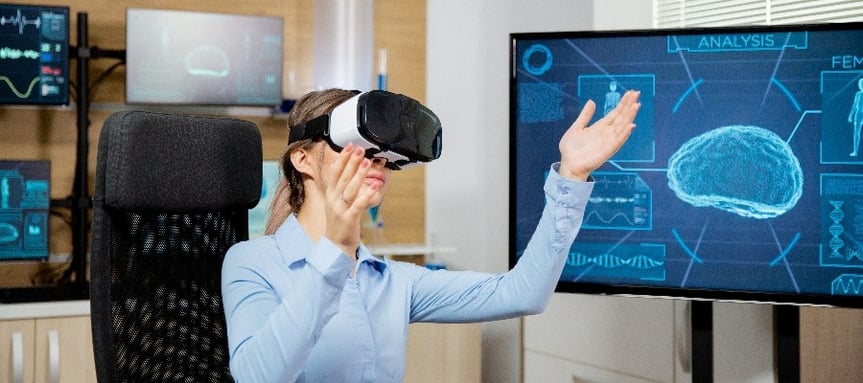
Image by DCS Studio on Freepik
5. Virtual reality in pharmaceutical research and drug discovery
Virtual reality enables researchers to be fully immersed in their 3D models, and visualize complex three-dimensional data from within. It helps them understand and analyze how everything connects and interact. For instance, VR is an ideal tool to discover new drugs and enhance preclinical research phases, such as drug-target interaction studies, and predicting the outcomes of a drug’s effect in the human body before clinical trials.
6. Virtual reality for ergonomics and operability on the floor plan of a hospital
When working on large-scale models, such as a hospital, a laboratory or a factory, you can use VR to optimize the design-to build process and improve ergonomics. For instance, when building a clinic, you need to take the line of sight of doctors and nurses into account, so they can easily check on their patients.
7. Virtual reality presentations for immersive pharmaceutical sales pitches
A huge obstacle for successful sales in the drug industry is competing for a professional’s time and attention. Which is why a VR presentation is a great tool to communicate accurately, efficiently and have a lasting effect, compared to a traditional sales pitch. For example, you can create a fully immersive experience to visualize with precise details how a new molecule will interact with one another.
What about augmented reality technologies in pharmaceuticals industry?
Augmented Reality is a technology that layers virtual data and environment above the real world. AR positively influences the biopharmaceutical industry, but concerns very different use cases than virtual reality. The difference is that AR is less immersive than VR, and sometimes all you need is your own smartphone instead of tethered VR headsets or an immersive room. The augmented reality experience also allows the users to collaborate almost seamlessly in both worlds.
Here are a few examples of what augmented reality can bring to pharmaceuticals:
- Scan unlabeled drugs to identify them and avoid drug administration errors
- Visualize components and production process to help improve drug sales and education
- Present complex data to an audience through an AR application
To keep up with market demands and the overall digitization of the pharmaceutical sector, successful drug companies recognize the need for smart and immersive technology. The use of AR and VR can be invaluable to many organizations, and spans even more areas than the ones we covered in this article such as patient treatment and education, behavior study, surgical planning… As Extended Reality continue to advance and turn out to be more affordable, we are likely to see even greater innovations become commonplace in day-to-day activities across pharma in the near future.
Other blog posts that might interest you
- The complete guide of VR for business
- 5 use case where professionals need VR finger tracking for engineering
- 4 use cases for virtual reality in the military and defense industry
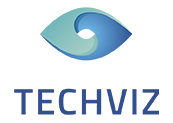





 Back to Blog
Back to Blog
